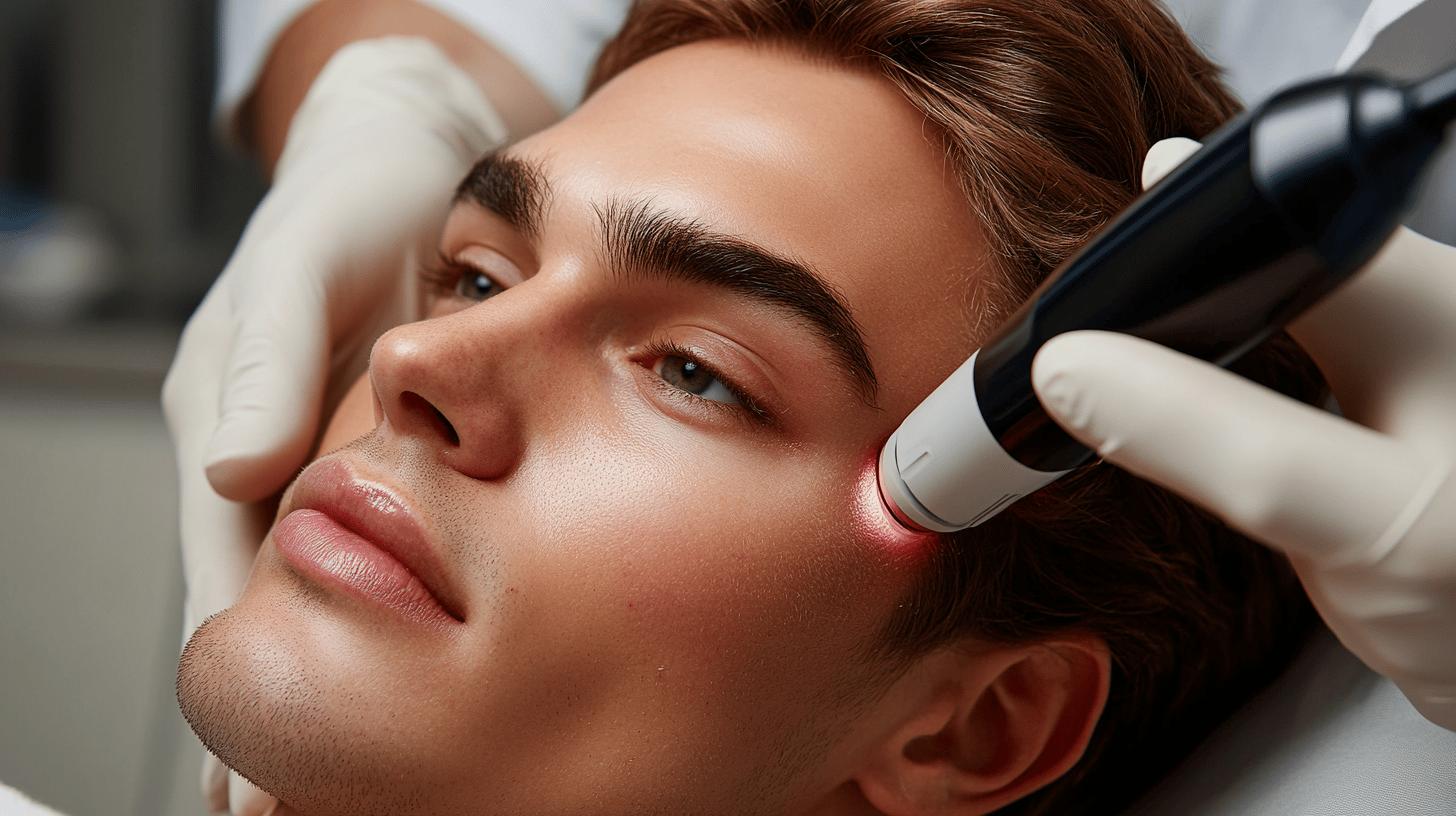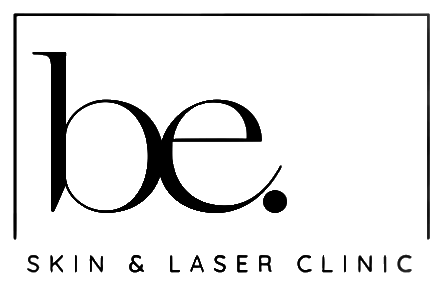Thinking of altering your tattoo? The choice between tattoo fading and complete removal can be more complex than it seems. Tattoo fading involves lightening your ink to pave the way for a new design, while full removal seeks to erase it. The right decision hinges on factors like your skin type and desired results. Whether you aim for a fresh canvas or merely a change in style, understanding these options is crucial. Discover which method suits your skin and beauty journey best, as Kim and the Be Laser & Skin Clinic team provide expert insights.
Tattoo Fading vs. Full Removal: Understanding the Basics
Tattoo fading and complete removal are two distinct processes with different end goals. Tattoo fading is primarily aimed at lightening the existing tattoo to make it easier to cover with a new design. This process is often quicker and involves fewer sessions than complete removal, making it an attractive option for those looking to update their body art rather than erase it. On the other hand, complete removal aims to eliminate the tattoo from the skin, a process that typically requires more sessions and a longer commitment. The choice between these methods is influenced by several factors, including the desired outcome, the tattoo’s age and colour, and the individual’s skin type.
Factors influencing the choice between tattoo fading and full removal:
- Desired Outcome: Whether the goal is to cover up the tattoo or altogether remove it.
- Skin Type: Sensitivity and tone can affect how the skin responds to the removal process.
- Tattoo Characteristics: Age, colour, and size of the tattoo determine the complexity of removal.
- Time Commitment: Willingness to undergo multiple sessions for complete removal versus fewer for fading.
- Budget Constraints: Cost differences between the two methods can be significant.
Considering skin type and personal goals is crucial when deciding on tattoo fading or complete removal. Some skin types may be more prone to scarring or pigmentation changes, influencing the decision. Personal goals will also dictate the choice, as someone seeking a fresh canvas may prefer complete removal, while another looking to modify their tattoo may opt for fading.
Pros and Cons: Tattoo Fading vs. Full Removal
When deciding between tattoo fading and complete removal, understanding the advantages and disadvantages of each method is crucial. Tattoo fading is often chosen by those looking to cover up an existing tattoo with a new design. It typically requires fewer sessions and is quicker, making it suitable for individuals seeking a faster transformation. However, it does not altogether remove the tattoo, which might be a downside for those desiring total erasure. On the other hand, complete removal aims to eliminate the tattoo completely. This process can take about a year and involves more sessions, as it thoroughly breaks down ink particles in the skin. While more time-consuming, it offers a complete reset of the skin’s canvas.
| Method | Pros | Cons |
|---|---|---|
| Tattoo Fading | Fewer sessions, quicker, facilitates cover-ups | Does not entirely remove the tattoo |
| Full Removal | Complete tattoo elimination | More sessions, longer process |
Both methods have different implications for skin safety and effectiveness. Tattoo fading is generally less intensive, reducing the risk of skin irritation and damage. It is ideal for those with sensitive skin or a lower tolerance for discomfort. Full removal, while more effective in erasing tattoos, may pose a higher risk of skin reaction due to increased sessions and the deeper penetration of laser technology. It is essential to weigh these factors based on individual skin conditions and aesthetic goals to make an informed decision.
Pain Levels and Healing Times

Pain levels experienced during tattoo fading and complete removal can vary significantly based on the method used and the individual’s pain tolerance. Laser tattoo removal, which is commonly used for both fading and complete removal, involves a sensation often described as similar to having a rubber band snapped against the skin. However, advancements in laser technology, such as using numbing agents and more precise laser delivery systems, have made the process more tolerable for most clients. Those with sensitive skin or lower pain thresholds may find fading less uncomfortable, as it typically requires fewer and shorter sessions than full removal.
The healing process after tattoo fading or complete removal is influenced by the number of sessions and the depth of ink penetration. Typically, tattoo fading involves a shorter healing timeline, requiring fewer sessions because it only lightens the ink rather than completely removes it. Clients can expect minor swelling and redness, which usually subsides within a few days. On the other hand, complete removal extends over a longer period, potentially taking up to a year to complete. Each session may require a few weeks of healing, with some clients experiencing more pronounced skin reactions due to the increased number of treatments.
Aftercare is crucial in managing pain and promoting effective healing post-tattoo removal. To minimise discomfort and expedite recovery, a cool compress is recommended to reduce swelling and soothe irritation. Keeping the area clean and moisturised with a fragrance-free lotion helps prevent infection and aids skin regeneration. Additionally, avoiding direct sun exposure and wearing loose-fitting clothing around the treated site can further protect the skin and enhance healing.
Cost and Time Commitment
Several factors, including the tattoo’s size, colour, and complexity, influence the cost of tattoo removal. Larger and more intricate designs typically require more sessions, thus increasing the overall cost. Tattoo fading generally involves fewer sessions than complete removal, often making it a more cost-effective option for individuals aiming for a cover-up. Additionally, some clinics offer package deals that can further reduce costs, especially for those committing to multiple sessions.
- Consider Package Deals: Many providers offer discounts for purchasing a series of sessions upfront, which can lower the overall cost.
- Assess Tattoo Size and Complexity: Smaller and simpler tattoos are less costly to remove, making getting an accurate estimate based on specific details essential.
- Inquire About Financing Options: Some clinics provide financing plans to spread out the cost over time, making it more manageable.
- Research and Compare Providers: Prices can vary significantly between providers, so it’s advisable to compare costs and services to find the best deal.
In terms of time commitment, tattoo fading requires fewer sessions, often completed within a few months, especially if the goal is a cover-up. Complete removal, however, demands a more extended timeline, potentially taking up to a year or longer due to the need for additional sessions and longer intervals between treatments. Evaluating the time investment is crucial for individuals balancing removal needs with their schedules and timelines.
Skin Type and Safety Considerations
Tattoo fading and complete removal can have varying impacts depending on an individual’s skin type. Those with sensitive skin might experience heightened irritation or redness, making tattoo fading a potentially more suitable option due to its less intensive nature. On the other hand, individuals with thicker or more resilient skin may tolerate the more extensive sessions required for complete removal. Skin tone also plays a role, as darker skin tones may have a higher risk of pigmentation changes during the removal process. It is essential to evaluate these aspects to ensure the chosen method aligns with one’s skin characteristics and minimises adverse effects.
Safety is paramount during both tattoo fading and complete removal. To protect the skin and prevent scarring, practitioners employ advanced techniques tailored to each skin type. Utilising cooling devices and numbing agents can mitigate discomfort and reduce the risk of thermal damage. Also, post-treatment care, including moisturising lotions and sun protection, is crucial in promoting healing and maintaining skin health. Clients are encouraged to consult with experienced professionals who prioritise safety and customise treatments to minimise scarring and optimise results.
Expert Opinions and Case Studies

Seeking professional advice is crucial when deciding between tattoo fading and complete removal. Experts can provide personalised guidance, considering individual skin types, the characteristics of the tattoo, and the desired outcome. This tailored approach ensures clients receive the most effective treatment with minimal risks. Professionals are equipped with the knowledge of the latest technologies and techniques, such as PicoSure® and Q-switched lasers, which enhance the efficiency and safety of the procedures. By consulting with experienced practitioners, clients can make informed choices that align with their personal goals and skin health needs.
A compelling case study involves a client who sought tattoo fading to prepare for a new cover-up design. After a thorough consultation, the expert recommended a series of laser sessions that successfully lightened the existing tattoo. The client reported minimal discomfort and was impressed by how quickly their skin responded to the treatment. This gradual fading allowed for seamless integration of the new artwork, ultimately achieving the client’s aesthetic vision without compromising skin integrity. Such testimonials highlight the importance of expert intervention in achieving satisfying results.
Expert recommendations emphasise the necessity of choosing reputable clinics like Be. Laser & Skin Clinic Taunton prioritises client safety and satisfaction. These clinics employ state-of-the-art equipment and skilled professionals who customise treatments based on individual needs. Clients are advised to discuss all concerns and expectations during consultations to ensure a comprehensive understanding of the process. By doing so, individuals can confidently embark on their tattoo removal journey, knowing they are in capable hands and maximising the likelihood of successful outcomes.
Final Words
Deciding between tattoo fading and complete removal depends on personal goals, skin type, and time commitment. Understanding the distinctions can guide decisions towards the most suitable method.
Fading offers a quicker solution for cover-ups, whereas entire removal demands more sessions but delivers complete erasure. Balancing cost and safety considerations is crucial for achieving desired results.
Consulting professionals ensure informed decisions. Whether choosing fading or complete removal, prioritising skin health and rejuvenation is key. Explore options with a trusted provider like Be. Laser & Skin Clinic to enhance skin confidence effectively.
FAQ
Is tattoo removal good for the skin?
Tattoo removal can benefit the skin by eliminating unwanted tattoos, potentially improving its appearance. However, skin sensitivity and the method used influence the outcome. Consult a professional to assess individual skin responses.
Does your skin look different after tattoo removal?
After tattoo removal, the skin may appear slightly different, often lighter. Texture changes are possible, though modern techniques aim to minimise these effects. Proper aftercare optimises healing and appearance.
Is it better to get a tattoo removed or covered up?
Choosing between removal or cover-up depends on personal preference, tattoo size, and budget. Removal offers a clean slate, while cover-up is quicker and less expensive. Consult experts for personalised advice.
What’s the most effective tattoo removal?
Laser tattoo removal is widely regarded as the most effective method. It targets ink particles, breaking them down for natural elimination. Outcomes vary based on tattoo characteristics and skin type.
Fine line tattoo removal before and after: What can one expect?
Fine-line tattoos usually respond well to removal treatments. Before-and-after outcomes reveal significant fading or complete removal, highlighting advancements in precision techniques. Follow professional advice for best results.





